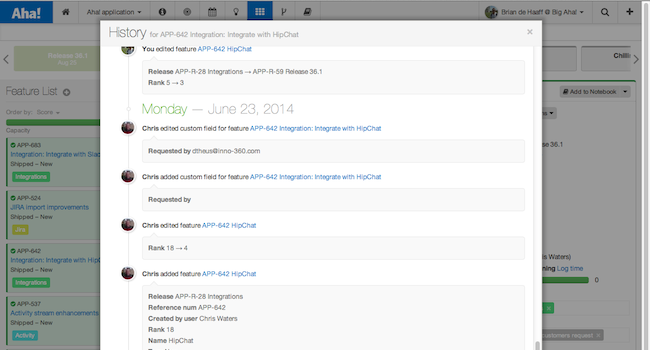
The Truth about Product Management and "Transparency"
Building a great product is hard. But when your company is your product — it’s everything. That’s why the product team that makes the decisions about where the product is headed has a lot of power. And that’s why people desperately want to know what they are doing. Build the wrong product and they kill the company. Build the right product, define a market, and they are loved.
Product managers are often considered to be the CEOs of their products. And that’s empowering, but it often leads to the wrong conclusion. Just because you’re in charge of a product does not mean that you can simply dictate where it is headed and why. At least not for long. Because if you do the rest of the organization will revolt and more importantly — bad decisions will be made.
The decisions we make as product leaders build or break down our business. At our best, we are a perfect mix of creative genius and analytical rationalist. We are that and an open book. At our worst, we are brutish, closed-minded, and hidden.
The world’s best CEOs clearly communicate their vision and how critical decisions are made. They do so to create broader understanding and to refine their own thinking based on the feedback that flows in. Product managers should too, but often don’t.
That’s a shame. But it’s not always their fault and it happens for lots of reasons including:
Fear
Poor communication
Lousy role models
Lack of tools
People pay lip service to transparency and collaboration driving product decisions in leading technology companies, but it’s scary to actually make it real. Product management is art and science and no one wants to be second guessed. That’s why product teams need both better input data to make product decisions and better tools to share their thoughts and capture feedback.
Aha! now makes it possible to do both — capture customer and business priorities and share all product team decisions and activities through a real-time stream.
We have always made it easy to capture customer ideas and to rank them via Aha! Scorecards. Aha! Scorecards allow your team to rank the importance of a feature based on the impact to the business — thus creating an Aha! Score for each feature that can be compared to all of the other features. You can fully customize the metrics, scale, and weights that are used to add quantification to your features. Scorecards can be used to assess the priority of both ideas and features.
And now with our recent release, we allow product teams to provide true transparency into what they are up to. You can now share the decisions you are making by product or across your portfolio of products with these just introduced capabilities.
Aha! activity stream The Aha! activity stream captures all adds, edits, and deletes that take place in Aha! For the first time, product management teams have a complete record of everything they have done and can share that information to provide complete transparency. By logging all activities, the team can understand how their strategy or a release changed course over time. It provides a complete history of what happened and why. The activity history is now available on the Dashboard and for Releases and Features under the Actions button. You can also see all of your own activity under My activity (via the drop down next to your name in the top right).
Aha! integrated with HipChat and Slack Atlassian HipChat and Slack both provide group chat platforms for agile teams. They make it easy to keep distributed teams in sync and productive through real-time sharing of information and integration with third party systems. Aha! is now integrated with both and if you configure the integration it will automatically send all product activity to the application of your choice. (It will send the same information that you see in your own activity stream in Aha!)
This is fantastic if you want a larger cross-functional team to be notified of key product decisions or events. Configure the integration of your choice under Account settings. You can choose to create one or many integrations at the account or product level. If you create it at the account level it will send the activity stream for every product. So, you can maintain greater control if you set it up by product. It’s up to you. You need to be an admin in your Aha! account to create an integration at the account level and only a product owner to create one at the product level.
The best product leaders lead from a position of strength because they have a vision, are able to prioritize their roadmap based on business value, and are willing to share. Sharing your plans only makes you stronger as you continually refine your thoughts and make better decisions. And now Aha! helps you do it all — set a strategic framework, capture feedback, and keep everyone in the loop.
All product and company names herein are trademarks of their respective owners.


